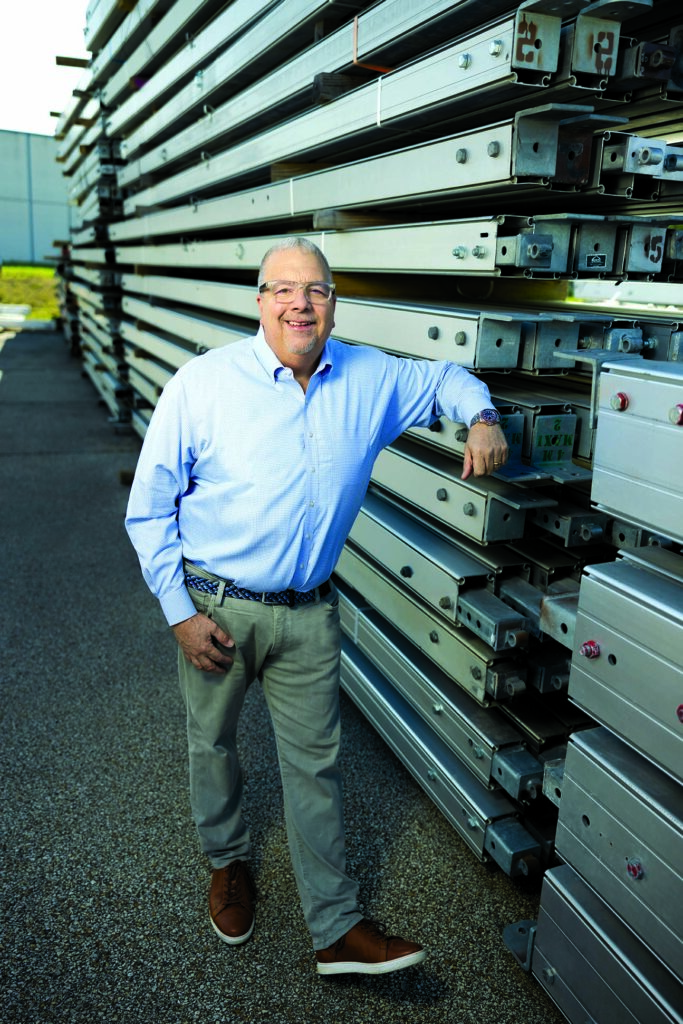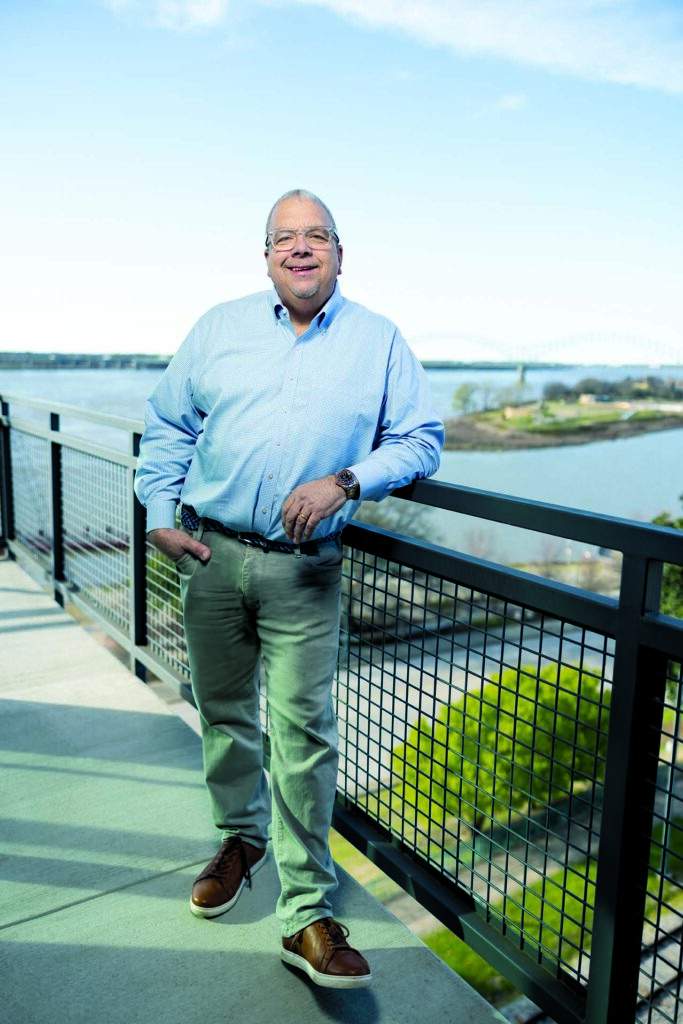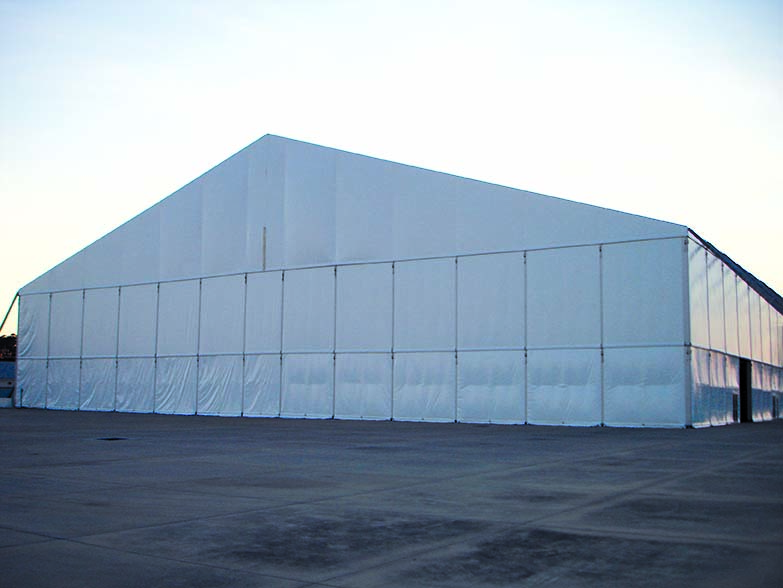
George Smith, vice president of operations for temporary structures for Sunbelt Rentals Inc. (and former president and CEO of Mahaffey USA), never intended to make a career out of the tent business.
In the beginning, it was strictly a side gig.
“I was working in garage door sales in Boston when my wife’s father suggested I buy some tents and rent them,” he says.
His father-in-law is Bill Pretsch, who at the time was the owner of a tent rental business, Mahaffey Tent & Awnings, based in Memphis, Tenn. One of his claims to fame was helping to bring clearspan tents to the United States in 1982. The innovative structures didn’t require a center pole or guy ropes and were an instant hit, especially with large outdoor events and concert promoters. Their popularity and the fact that Mahaffey was one of the first American rental operations to have them, allowed the company to expand its rental territory across the country, primarily east of the Rockies.
Smith took his advice and purchased a few 20-by-20-foot and 30-by-30-foot Tentnology® canopy tents, renting them out of his garage on weekends for backyard parties. It was a good sideline, but Smith continued to work full time in the garage door business for a few years. Then in 1994, he landed a contract for ancillary tents at the FIFA World Cup games in Foxborough, Mass.
The international event was an eye-opening experience. Smith enjoyed being in the field and, for the first time, began to grasp the industry’s potential. “I realized this really fit my skill sets and could be a fun career.”
As a result, in 1996, he joined the family business. It was a decision Smith didn’t take lightly. Brother-in-law William Pretsch had stepped in three years earlier when Bill Sr. decided to take a less active role in the company. “I liked William and Bill and was worried about straining family relationships if things got tough in the business,” he says.
Smith’s wife, Karen, joined at the same time, providing marketing and copywriting. “It felt right that we did this together,” he says. At the time, Mahaffey had 35 employees and a solid business renting to fairs, festivals and special events.
Smith and William made bold moves to grow the business, taking out a loan to purchase a larger clearspan tent in 1999, a calculated risk that enabled them to cover larger areas more efficiently. Now one large tent could do what had required two.
It was a solid business with solid growth. Until it wasn’t.
9/11 turning point
“We lost half our business overnight,” says Smith, referring to the 9/11 attacks in 2001 and the subsequent economic contraction, especially in travel and entertainment. That’s when Smith and Pretsch realized Mahaffey needed to diversify. Their approach was two-pronged. One was to expand subcontracting/rentals to other rental companies who didn’t want to keep large tents or clearspans in inventory.
“That started right around 9/11,” says Smith. “Lots of tent companies were gun-shy about making investments.”
Mahaffey’s other strategy was expanding into industrial markets. The company had some experience in the area and knew the value of long-term rentals to smooth out the ebbs and flows of the entertainment and events market.
To build contacts and generate leads, Mahaffey bet on paid internet searches. When someone typed in “tent for construction site” or similar, the Mahaffey website would pop up near the top. It turned out to be a sound strategy and how the company got most of its early industrial prospects.
Keep investing
Following their belief that bigger is better, Mahaffey continued to invest in tents, purchasing several giant clearspan tents, 210 feet (64 m), in 2005 to secure an aviation contract (see sidebar). “Everyone wants bigger and taller. Decorators love it, and it works for big industrial projects too,” says Smith. “We always wanted to have the biggest structures in the country, and it’s been
a risk that’s paid off.”
That same year, following Hurricane Katrina, Mahaffey expanded its disaster relief work, renting tents to power companies and to cleanup, catering and aid organizations. Its growing inventory allowed Mahaffey to respond rapidly to need, making it a logical extension of the business.
Another important catalyst for growth was Pretsch’s work developing military contacts, eventually leading to a significant contract in Fort Polk, La., in 2010. The five-year deal provided critical cash flow for the company that made it easier for Smith and Pretsch to purchase Mahaffey from Bill Sr. It also opened other opportunities within the military sector.

Second turning point
“Once we realized the world wouldn’t end, COVID was the best thing that ever happened to the tent industry,” says Smith, echoing a sentiment many would agree with. It was a different kind of disaster, and Mahaffey, like many in the industry, expanded further into long-term temporary structures for health care (including 2,000 tents for a temporary hospital) and more.
Change of ownership
With business booming, Smith and Pretsch decided that after spending 25 years growing the company, the time was right to explore options. “William and I never ran this like a family business. We didn’t play it safe. Our approach was invest and grow,” says Smith.
In December 2021, Mahaffey Fabric Structures was acquired by Sunbelt Rentals, an industrial equipment rental company. Mahaffey Event & Tent Rentals, the local Memphis party rental spinoff, continues to be owned and operated by Smith and Pretsch.
Smith stayed on board after the sale, though his role has changed. He’s less involved in the day-to-day and more of a resource for figuring out tricky jobs—his favorite part of the business. It’s also a way for Smith to transfer decades of knowledge to others. In addition, he’s working with Sunbelt to help it identify tent rental companies to acquire, work he enjoys. “It’s fun to look under the hood and see what makes those companies tick,” he says.
Giving props
Smith credits people he’s met in the industry for a lot of his success. His contacts became invaluable resources for best practices, problem-solving and the occasional save. One example was when the company got to an out-of-town jobsite and needed equipment that went missing in transit.
“I knew who the local guys were, and everyone was always willing to help.” He gave back too, informally and by serving on the ATA Tent Rental Division (TRD) board from 2001 to 2010, including a stint as TRD chairman.
“This business has all the hardest things to manage—time, weather, travel and people, and I still can’t think of a better industry for variety, creativity and fun. No two days are alike,” says Smith.
His advice to others is to be transparent with customers and employees, practice what you preach and avoid hidden agendas. And empower team members to think on their own, even if it leads to occasional mistakes. “Your belief in people leads to growth.”
Laurie F. Junker is a freelance writer based in Minneapolis, Minn.
SIDEBAR: Project Snapshot

Fit for royalty
“Can you cover a full-size airplane for three years?” was the unusual request Mahaffey USA received in 2005 from an aviation company customizing the interior of a private aircraft for a Saudi prince. It required a tent Mahaffey didn’t yet have in stock and construction capabilities it hadn’t yet developed. Nevertheless, George Smith and William Pretsch decided to go for it.

“We jumped right into the cold water, took a loan, bought a 64-meter clearspan with 11-meter uprights and put it up over a crazy-expensive plane. It was tricky and there were moments like ‘What did we do?’” says Smith. In the end, not only did the rent more than cover the cost of the tent, but they got a second contract from the same company to cover a custom plane job for an African dignitary. Smith says it was one of Mahaffey’s biggest accomplishments, and the experience expanded his thinking. “The possibilities of what can be accomplished quickly with these aluminum box beams are almost endless.”
SIDEBAR: Q/A
How do you manage family in a business?
Preserving harmony while operating a business with family members can be challenging. George Smith believes the key to success is clear leadership. At Mahaffey, that meant whoever had the title of president and CEO (first Bill Pretsch Sr., then William Pretsch, then Smith) made the call when family members disagreed on a strategy or solution.
“Someone must be the boss, and others need to respect and live with that,” Smith says. “You can’t work for a two-headed monster.”
 TEXTILES.ORG
TEXTILES.ORG


